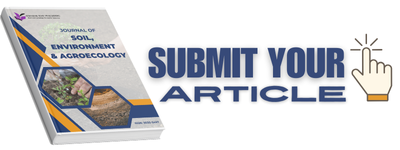Undrained Shear Strength of Beaufort Peat: Behavioural Analysis
DOI:
https://doi.org/10.37934/sea.3.1.18Keywords:
Consolidated Undrained, total stress peat, triaxial test, Unconsolidated UndrainedAbstract
Peat soil is a highly organic surface layer primarily derived from plant remains. Peat, on the other hand, is the subsurface of wetland systems and consists of unconsolidated superficial layers with a high content of non-crystalline colloid (humus). It is generally dark brown to black, has an organic odour, and a spongy consistency. Peat soil is commonly found in swamp areas and is a partly decomposed organic layer of soil generated from plant matter that accumulates under conditions of waterlogging, high acidity, oxygen scarcity, and nutritional deficiency. Peat soils typically have a low shear strength ranging from 5 to 20 kPa, high compressibility from 0.9 to 1.5, and a high moisture content exceeding 100%. Peat also exhibits significant deformation, varied magnitudes, and specific structures, with an organic matter content exceeding 75%. The investigation of peat soil involves Unconsolidated Undrained Triaxial Tests, where parameters are explored under varying Total Stress of 13kPa, 25kPa, 50kPa, and 100kPa, with samples taken from three different locations: Kpt-L1, Kpt-L2, and Kpt-L3. The findings suggest that different peat soil locations yield varying results due to differences in composition. The Triaxial Test Unconsolidated Undrained was used for the peat soil in Sabah. This was the first time this test was conducted by a researcher at Klias Peat Swamp Field Centre in Beaufort, Sabah. Unconsolidated Undrained and Consolidated Undrained tests are not significant since the moisture content of peat soil is high.
Downloads










